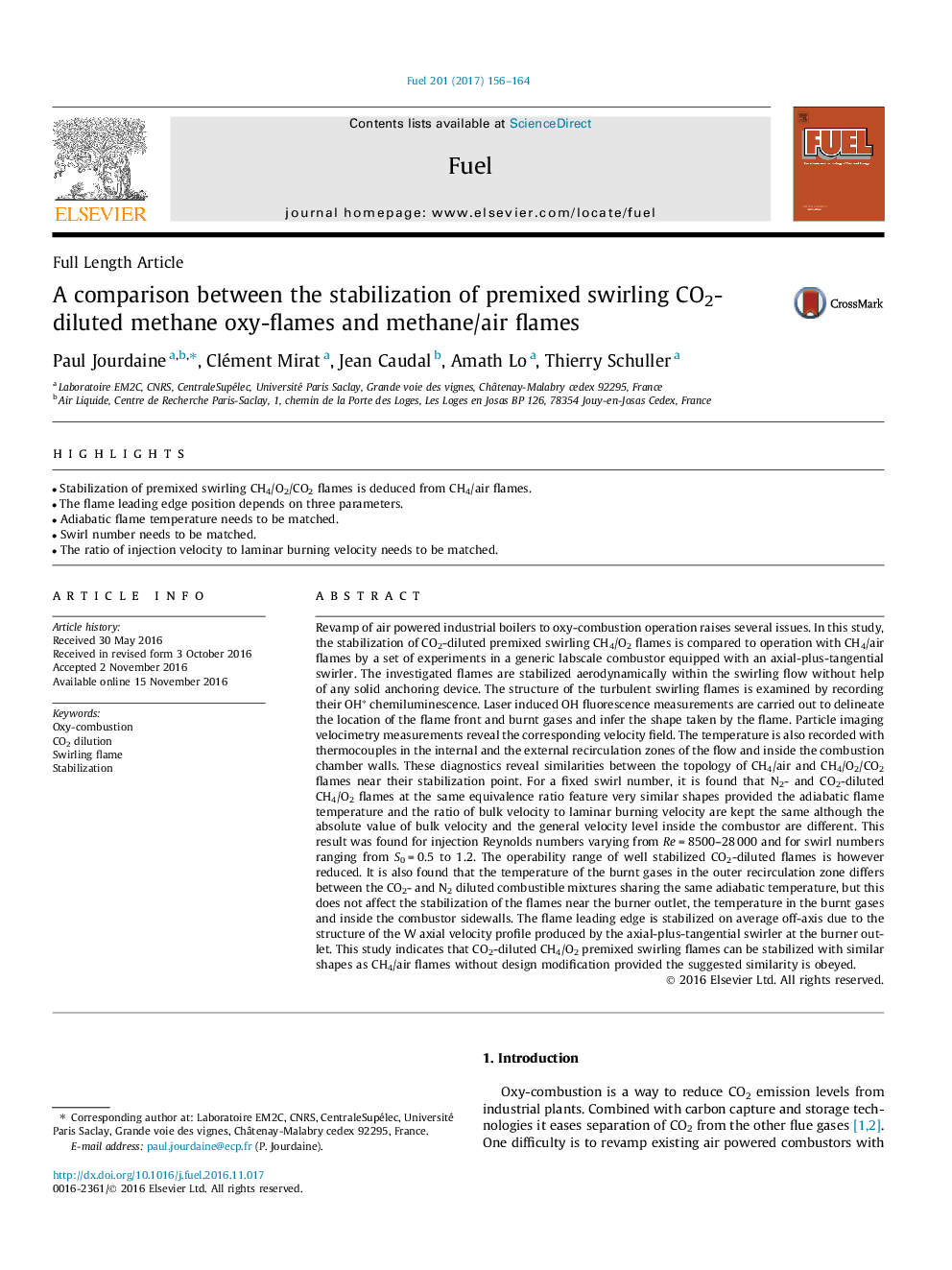| Article ID | Journal | Published Year | Pages | File Type |
|---|---|---|---|---|
| 6473669 | Fuel | 2017 | 9 Pages |
â¢Stabilization of premixed swirling CH4/O2/CO2 flames is deduced from CH4/air flames.â¢The flame leading edge position depends on three parameters.â¢Adiabatic flame temperature needs to be matched.â¢Swirl number needs to be matched.â¢The ratio of injection velocity to laminar burning velocity needs to be matched.
Revamp of air powered industrial boilers to oxy-combustion operation raises several issues. In this study, the stabilization of CO2-diluted premixed swirling CH4/O2 flames is compared to operation with CH4/air flames by a set of experiments in a generic labscale combustor equipped with an axial-plus-tangential swirler. The investigated flames are stabilized aerodynamically within the swirling flow without help of any solid anchoring device. The structure of the turbulent swirling flames is examined by recording their OHâ chemiluminescence. Laser induced OH fluorescence measurements are carried out to delineate the location of the flame front and burnt gases and infer the shape taken by the flame. Particle imaging velocimetry measurements reveal the corresponding velocity field. The temperature is also recorded with thermocouples in the internal and the external recirculation zones of the flow and inside the combustion chamber walls. These diagnostics reveal similarities between the topology of CH4/air and CH4/O2/CO2 flames near their stabilization point. For a fixed swirl number, it is found that N2- and CO2-diluted CH4/O2 flames at the same equivalence ratio feature very similar shapes provided the adiabatic flame temperature and the ratio of bulk velocity to laminar burning velocity are kept the same although the absolute value of bulk velocity and the general velocity level inside the combustor are different. This result was found for injection Reynolds numbers varying from Re = 8500-28 000 and for swirl numbers ranging from S0 = 0.5 to 1.2. The operability range of well stabilized CO2-diluted flames is however reduced. It is also found that the temperature of the burnt gases in the outer recirculation zone differs between the CO2- and N2 diluted combustible mixtures sharing the same adiabatic temperature, but this does not affect the stabilization of the flames near the burner outlet, the temperature in the burnt gases and inside the combustor sidewalls. The flame leading edge is stabilized on average off-axis due to the structure of the W axial velocity profile produced by the axial-plus-tangential swirler at the burner outlet. This study indicates that CO2-diluted CH4/O2 premixed swirling flames can be stabilized with similar shapes as CH4/air flames without design modification provided the suggested similarity is obeyed.
